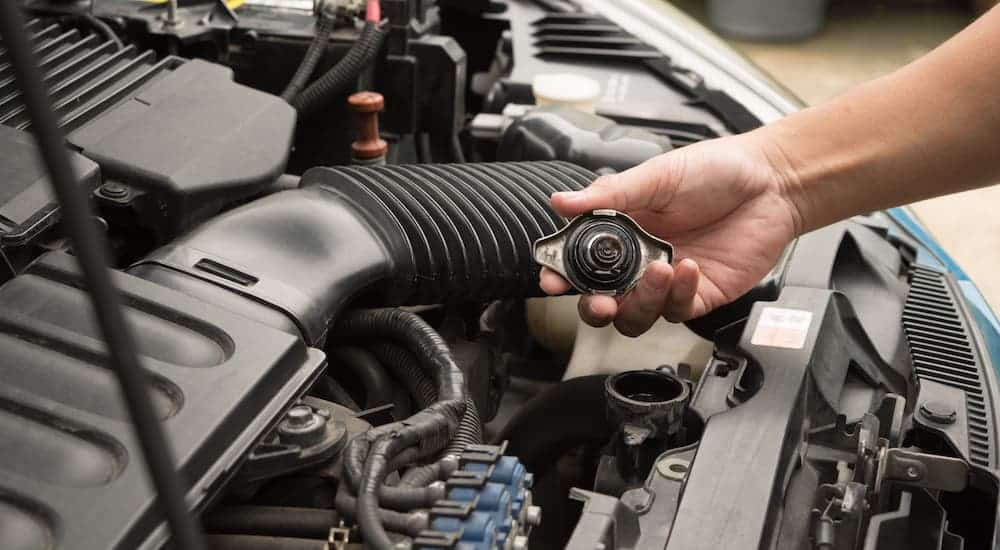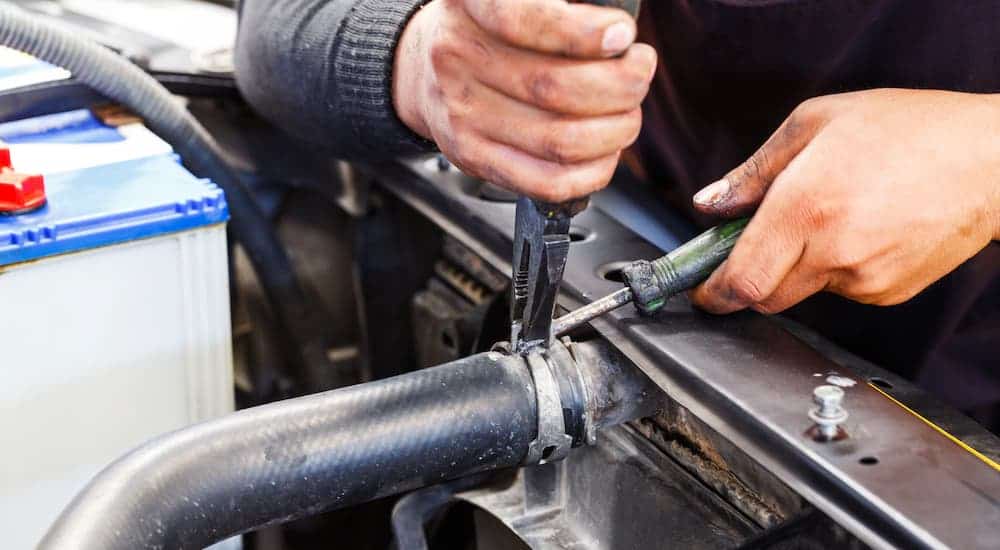When it’s a hot day and your car has been parked outside, baking in the heat, you immediately dread having to get inside and wait for the air conditioning to get going. It doesn’t typically take too long before the heat is a thing of the past, and you feel the cool air blowing, which is a marvel of modern technology. Have you ever thought about how your engine feels on a day like that? Your car’s engine powers the entire vehicle, which produces an extreme amount of heat. Instead of air conditioning, though, the engine relies on a cooling system to keep from overheating. Without routine cooling system maintenance, your engine would overheat and eventually melt.
Fortunately, you can make sure an event like that never occurs with routine maintenance and checkups with your mechanic. In some cases, you may be able to take care of cooling system maintenance yourself, but there will be times where you might want a professional to take a look and handle the heavy lifting. Let’s take a look at the parts that make up the typical car’s cooling system and what things to look out for.
Cooling System Parts and Functions

In general, a car engine produces heat from the friction of its moving parts. The heat needs to be transferred away from your engine, so it doesn’t overheat, which is where the cooling system comes into play. Exhaust systems and oil can help reduce the amount of heat, but engines still get hot and will require more help.
With most cooling systems, you have these parts:
- Thermostat: Detects when the engine is too hot and triggers the release of water and coolant.
- Radiator: Transfers heat from hot coolant into the air.
- Fan: Blows air across the radiator so heat can be transferred away.
- Water pump: Keeps coolant moving between the engine and radiator.
- Belt: Keeps the water pump moving so coolant can flow properly.
- Clamps and hoses: Provides the passageways for coolant to flow throughout the cooling system.
- Coolant: Cools down the engine as it flows through and then dissipates heat as it goes through the radiator.
As your engine begins to start working hard and is producing a lot of heat, your cooling system will also start working. The radiator will send water and coolant to the engine where they can pick up the heat being produced. After the temperature has increased, the coolant heads back to the radiator, where the heat is transferred to the air. Since the radiator has a fan blowing on it and air coming in from the vents, there’s a lot of opportunities for the heat to dissipate from the hot coolant into the air.
When the system functions correctly, your engine cools down and doesn’t become overheated, and everything runs smoothly. But if any of these parts malfunction, you could have some issues.
General Maintenance
It isn’t typically recommended to work on your car yourself unless you know what you’re doing. However, with some proper guidance, hopefully by a seasoned veteran of car maintenance, you can at least make sure your cooling system looks and functions correctly.
Start off with a visual inspection of the parts you can see that are part of the cooling system. Check the belts to make sure they don’t look excessively worn or loose-fitting. Then check the hoses and clamps connecting the system together. If anything looks loose, then make sure it gets tightened and/or secured properly. Don’t try to adjust things while the car is running or while parts are hot.
Once you’ve done your first visual inspection, you can do another visual inspection while the car is running. This is to check for any malfunctions while the parts are moving. Normally, it should be pretty obvious if something is wrong because you tend to hear it. A cooling fan might be making too much noise, or a loose belt could be squeaking or squealing.
Throughout both tests, check around the different areas of the cooling system to see if anything is leaking. If you find any coolant leaking, it may be time to get help from a mechanic or repair shop. You can easily add coolant to your vehicle yourself, but getting leaks fixed might be a bit more in-depth.

Visit a Mechanic
While it’s fine to check for different types of issues with your cooling system yourself, you should always consult a professional mechanic if you don’t know what you’re doing. This holds true for just about any serious car maintenance, but especially something as important as cooling system maintenance. If something goes wrong with your engine and it overheats, something could happen that could cause you to have to scrap the entire vehicle. To avoid this potential mishap, get your cooling system checked regularly.
After doing their visual inspection and going many steps further, a mechanic can let you know if anything needs replacing or fixing. One part of your cooling system that can use regular maintenance is the coolant itself. Coolant can last for quite some time, often for many years or tens of thousands of miles. But you can’t keep adding coolant to your system forever and expect it to continue functioning well. Coolant can last, but the entire system needs to be flushed every few years or around 30,000 miles, whichever comes first.
The reason coolant flushes need to be constant is that rust and scale can build up within the system. A complete flush will clean the system out and get rid of the old coolant, along with the buildup of debris that shouldn’t be there. If you get too much accumulation of rust and scale, it will be harder for your cooling system to properly keep your engine from overheating. Basically, gunk builds up over time, and it needs to be flushed.
In addition to coolant flushes, a trained mechanic can dig into other bits of your cooling system that may need some maintenance. It’s not always the easiest thing to check for internal leaks, internal pressure, and if the thermostat is functioning properly—but a mechanic has the tools and know-how to get the job done.
Stay Maintained
At the end of the day, you don’t want to take any chances with your vehicle. For many of us, our car is one of our most important material possessions. First of all, it can cost thousands of dollars, and second, it allows us to do daily errands and necessary tasks. If you ever have serious engine problems from overheating issues, you can usually say goodbye to that vehicle. The costs to repair it are generally more expensive than getting a new vehicle, so it typically wouldn’t be worth it. Instead, you can make sure your cooling system maintenance is always done on time and, more importantly, done correctly.
Be sure to brush up on some DIY skills when it comes to your cooling system, but leave the serious issues to the professionals if you aren’t comfortable with them yourself. And remember, the cooling system is like the air conditioning for your engine. Would you be happy if your air conditioning was malfunctioning or not blowing cold air on a hot, summer day? Now imagine how hot your engine is getting when rust and scale start to build up, or if the cooling fan isn’t working correctly. Probably not a good thought, so always remember to do your maintenance.

